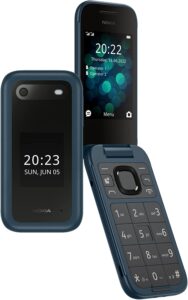If you’re going to choose a dumb phone, the Nokia 2660 Flip is a smart choice.
Nokia 2660 Flip review
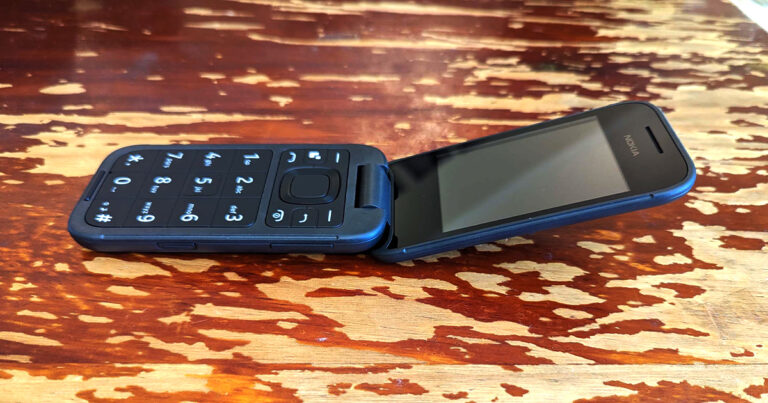
The last time I carried around a flip phone was the iconic Motorola Razr. No, not the 2022 Motorola Razr: the original one. This was back in the day when it was viable to hang onto a phone for years and then pay it forward to a family member after a cheap internal battery upgrade (which I did).
Fast-forward to more recent times, and the world has gone smartphone mad. But deathly rumours of the unflatteringly named “dumb phone” are greatly exaggerated. In fact, one of the big names in mainstream old-school mobile phones is still pumping out new models today, including the Nokia 2660 Flip.
I honestly thought I wouldn’t get much joy out of the Nokia 2660 Flip, outside of the requisite nostalgia hit of a flip phone in my pocket, but I was pleasantly surprised.
Nokia 2660 Flip value for money
There are phone cases, mounts and charging devices that cost almost as much as the Nokia 2660 Flip. Basically, if you want a cheaper feature phone, you’re looking at non-flip options like the Nokia 8210 4G or Opel Mobile BigButton M.
With a $149 RRP, the only real competition is the Opel Mobile TouchFlip if you’re after a flip feature phone. Otherwise, you’re upping the budget to closer to $200 when you start to access cheap Android phones.
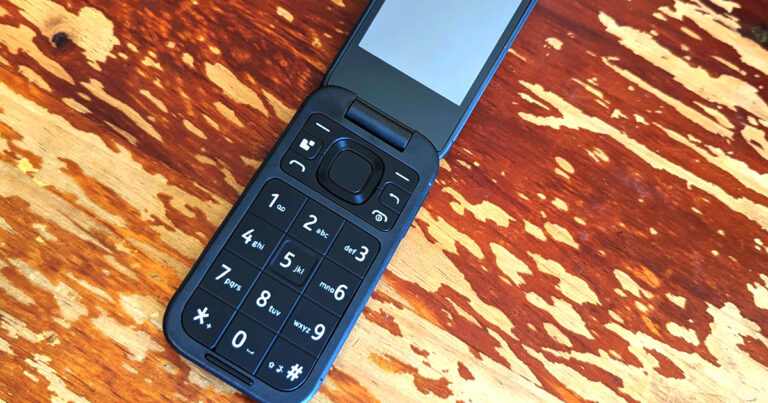

Nokia phones compared
Not sure which Nokia phone is best for you?
Click below to see how they compare.
Nokia 2660 Flip design and display
Unless you’re using a very, very expensive smartphone with a flip or fold screen, most phones these days have a single screen. The Nokia 2660 Flip has a 1.77-inch secondary screen when the clamshell is closed for tracking time and notifications. Otherwise, most of your time is spent with the 2.8-inch main screen when the phone’s flipped open.
The main display is sharper and clearer than I was expecting, though some of the font sizes are too small. Keep your grubby digits off the screen because the Nokia 2660 Flip has old-school navigation: namely, a keypad that occupies the bottom half of the clamshell design. Still, I did notice the screen started to smudge with the outline of the keypad after a few weeks.
The main 12 digits on the keypad are generously sized with an equally large main interaction button that’s flanked by a four-way navigation touch rim. Admittedly, the navigation buttons beside that main button aren’t the biggest but you can mostly get away with not using those.
On the right side of the numbers are easy-to-use volume buttons. Despite its small size, the Nokia 2660 Flip puts out loud volume. Below the volume buttons is a single contextual button, which either turns the secondary screen on and off when the phone is closed or acts as a long-press SOS button with the phone flipped open.
It wouldn’t be an old-school phone if it didn’t have a 3.55mm audio jack (and included earphones), which is on the left at the opposite end of the MicroSD charging port. I did have some trouble cracking open the Nokia 2660 Flip for initial use, but it’s impressive to see dual-SIM slots that sit beneath the removable battery.
Nokia is a Finnish telecommunications company that’s been around since 1865. Today, Nokia makes phones (smartphones and feature phones), laptops, TV, audio and WiFi devices for consumers.
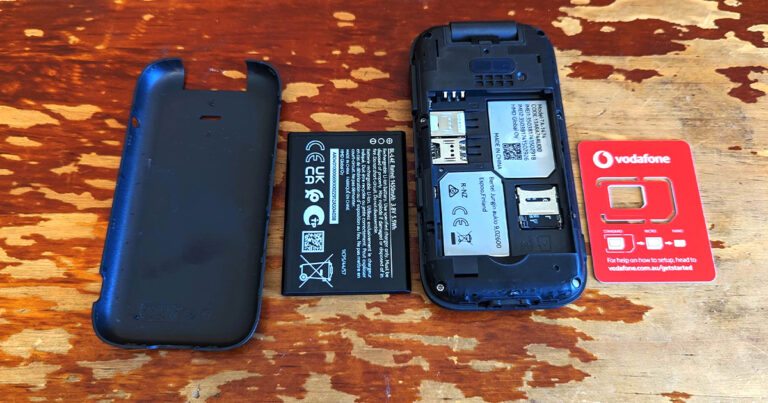
Nokia 2660 Flip camera
The Nokia 2660 Flip has a very minimalist approach to its camera. It’s there. But it’s not something you should be using. As you might guess from its incredibly low 0.3MP specs, the solitary camera on the back of the Flip doesn’t produce the best results.
For starters, the camera is slow to load. Once it’s loaded, there’s a very narrow frame for your photos. Everything looks darker than it should, low-res and lacking in detail. Then you actually have to take the pic, ideally with a very steady grip as you firmly press the main menu navigation button and hope you don’t mess up your framing.
There’s no shutter noise to let you know you’ve captured the pic, but it’ll be there in all of its low-res glory in your gallery. Because the Nokia 2660 Flip doesn’t have WiFi, you’ll need a MicroUSB cable to transfer data from phone to computer (this cable isn’t included). Alternatively, use Bluetooth or MMS to transfer pics. The low-res camera looks even worse for capturing videos, and there’s not a whole lot of internal storage to work with. Admittedly, the Nokia 2660 Flip does allow for a 32GB MicroSD card.
Check out the side-by-side comparison. The first is taken from the Nokia 2660 Flip in the evening using two hands to keep things as steady as possible. The second is a shot from the Google Pixel Pro 7. Yes, it’s a very unfair comparison, but given these shots were taken seconds apart, you can see why the Nokia 2660 Flip isn’t really a viable photography option.
Nokia 2660 Flip features and performance

The thing about feature phones is they’re, ironically, light on features, meaning they’re best used for calls and SMS. If you’re using the Nokia 2660 Flip for those basic functions, it’s a great phone. When it tries to get a bit smarter, though, things start to slow down.
There isn’t any WiFi, but you can use phone data for very basic internet browsing. I used a Vodafone long-expiry Prepaid SIM card, and it worked for calls, SMS and data without any additional configuration on the Nokia 2660 Flip. Internet browsing is frustrating because of the slow keypad input and the reality its auto-predict functionality is very limited.
For instance, it doesn’t recommend ‘Google’ when you start typing the first few letters, whereas modern phones would. When you do make it to a website, they look like a stripped-back version with not a whole lot of space on the screen to clearly display its contents. That’s if they work at all: Reviews.org, for instance, wouldn’t even load.
It is admirable that the Nokia 2660 Flip has Bluetooth for pairing audio output devices, but that’s about as far as expanded connectivity goes. There’s a torch and some basic games to play, but the games can be sluggish and even the Facebook button is just a web browser shortcut.
Thankfully, the Nokia 2660 Flip has great battery life. Even if you’re using it on and off during the day, you can easily get four or more days of life. In terms of standby mode, I had it powered on with minimal use and it didn’t die until 11 days after a full charge.
Is the Nokia 2660 Flip worth buying?
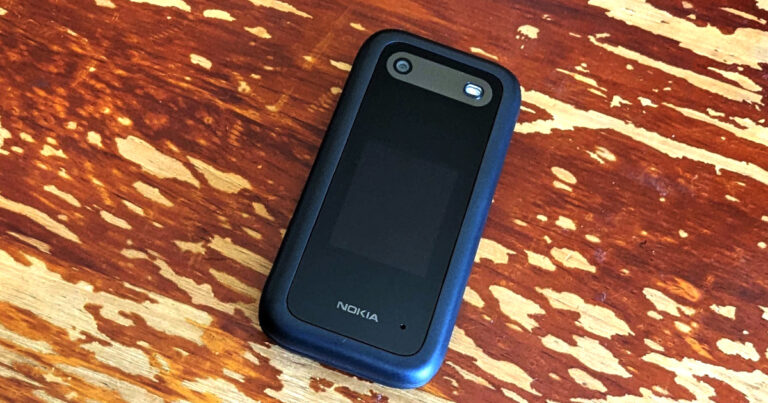
While the camera ain’t flash and the basic web functionality leaves a lot to be desired, the Nokia 2660 Flip is still a steal at $149 RRP. It works well as a pared-back mobile phone, great for kids, seniors and people looking to be less connected. If you're after a cheap handset with plenty of battery life and some surprising inclusions, the Nokia 2660 Flip is worth a look.
How we review feature phones
Feature phones are a lot easier to test than smartphones. Why? Because they don’t have as many features as a smartphone. Our analysis starts with price, determining whether a feature-restricted phone is worth spending money on when cheap smartphones start at under $200.
We pay attention to what’s included in the box: a charger is expected (including a power adaptor, unlike modern smartphones) but we appreciate extras like headphones, a removable battery and a data-transfer cable for getting files to/from the phone. Next up is a look inside the phone, which is hopefully easy to do, to see whether there’s any value-add inclusions like dual-SIM and/or a MicroSD port.
Now it’s time to test the feature phone. Ideally, a feature phone is easy to turn on and off with big buttons and a decent screen, given these phones tend to be popular with kids and older adults. We test the battery life in terms of basic use and standby, then poke around in any apps and settings to see what’s on offer beyond basic functionality.
Nokia 2660 Flip FAQs
No, the Nokia 2660 Flip doesn’t have WiFi but it does have Bluetooth.
No, the Nokia 2660 Flip is a feature phone (aka a dumb phone or brick phone), which only has limited smart functionality (effectively limited to a web browser).
Related Articles




